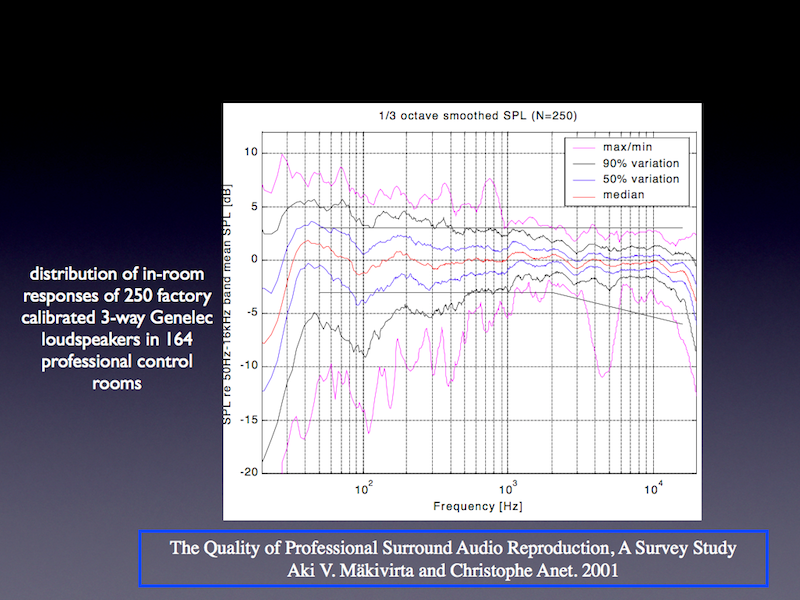it seems that based on the description in the second paragraph that one could use
bandwidth limited "sources" to provide two or more sinewaves per the above, and then
have an envelope with infinite bandwidth??
The "envelope" is not really there. Check with a spectrum analyzer, it's just two sines, nothing else.
Last edited:
There is nothing wrong with opamps. Certainly many hifi gears which sound fantastic and without doubt will carry music forward with high fidelity have used them.
In the quest for perfection many audiophiles (not only the tubby s.e.t. group) and engineers found many discrete transistor circuit to surpass audibly the performance of op-amps. As perfect as they are on paper, like a good transistor amplifier, opamps are no match for properly regulated and matched discrete components.
However my setup is very bad measuring to a simple opamp, but the sound is unrecognizable!
thd is 0.01% , unweighted s/n 60 db! coming directly from a noisy computer.
In the quest for perfection many audiophiles (not only the tubby s.e.t. group) and engineers found many discrete transistor circuit to surpass audibly the performance of op-amps. As perfect as they are on paper, like a good transistor amplifier, opamps are no match for properly regulated and matched discrete components.
However my setup is very bad measuring to a simple opamp, but the sound is unrecognizable!
thd is 0.01% , unweighted s/n 60 db! coming directly from a noisy computer.
really is boring to see "realism", perception brought into the conversaiton so naively

if you are serious about "hearing like the mastering engineer" then you should have the Smyth SVS Realizer, personal HRTF calibrations at your favorite Mastering Studio mixing desk: smyth Realiser A16
Audyssey rulez! Who said "Not kosher"?
Here is a 'touch' of the late Richard Heyser. He is where I got my original ideas about this from.
Unpublished Writings | Heyser Collection | College Archives & Special Collections | Columbia College Chicago | Richard C. Heyser Collection | Columbia College Chicago
It likely had to do with things that we are not supposed to delve into too much here in the forum.
Good. Don’t be tempted by the Sirens (the Police is out on the streets).
George
The "envelope" is not really there. Check with a spectrum analyzer, it's just two sines, nothing else.
It's not my claim - aim that at the OP!!
Yes that's a great resource, though somewhat heavy at times. Chapter 11 is particularly nice.
Jan
Listening is where the rubber meets the road.
Maybe you miss the point, Ron Quan's results were purely a mathematical/instrumentation exercise no listening. When he got seriously beyond 741's he found very little, and when some "audiophile standards" were measured he found plenty. So I don't get how agreeing with his findings proves any point. BTW there are some here who I doubt could double check his math, which does not matter.
A primitive or poorly designed circuit can have its BW modulated by input/output level to the point of there being some phase intermodulation. Both Ron and Bob showed that this is easily avoided, so disagree with Bob, agree with Ron = Norman coordinate.
The "envelope" is not really there. Check with a spectrum analyzer, it's just two sines, nothing else.
For a stationary signal you would be correct. Now try switching the tones on and off (as the original poster mentioned) and let us know of the spectrum.
For a stationary signal you would be correct. Now try switching the tones on and off (as the original poster mentioned) and let us know of the spectrum.
The spectrum would change, of course. But so what? Is there some additional point I am missing?
Norman coordinate.
I had to look that up, haha! How do you guys know these things??
Jan
I had to look that up, haha! How do you guys know these things??
Jan
Humans don't seem to be much affected by it. They are by nature frequently remarkably self-inconsistent, and yet they keep ticking.
I had to look that up, haha! How do you guys know these things??
Jan
Well that's why it was so easy to look up.
Not in bandlimited music.john curl said:instantaneous changes in level
Only when you already know that it is a sine wave. The amplifier does not know this. The amplifier cannot know this, unless it contains a time-travelling Maxwell demon.A sine wave is single-dimensional,
A compressor is likely to be strongly non-linear and significantly non-time-invariant. Both make it very different from a serious audio amplifier.Markw4 said:Of course, we don't expect such complex behavior from an amplifier, in large part because we have convinced ourselves that we understand amplifiers a lot better than vintage compressors.
Do we? Do we? I think we do know what an amplifier is likely to do if sufficiently far below clipping, but clearly 'below clipping' is different from 'any situation'.hat is, we have a mental model of all the stuff an amplifier can possibly do in any situation, and we firmly believe the model to be complete.
Yes. I was just playing JC's trick back to him: our 'intuitive' perception of what is simple and what is complex can be quite different from how a well-behaved amplifier 'perceives' things to be.bear said:Question - it seems that based on the description in the second paragraph that one could use bandwidth limited "sources" to provide two or more sinewaves per the above, and then have an envelope with infinite bandwidth??
It is a much 'simpler' case of the same thing. However, if the two (or more) signals are not the same amplitude then the envelope might have much smaller bandwidth as it loses the spike down to zero. If the amplifier is sensitive to signal envelope bandwidth (and a priori we cannot assume that it is not) then two same amplitude sine waves may stress it more than real music! I am just playing devil's advocate, and showing how silly is anthropomorphism applied to electronics.So, how does this differ from the various bandwidth limited signals intermodulating now in any given audio amplifier?
Do we? Do we? I think we do know what an amplifier is likely to do if sufficiently far below clipping, but clearly 'below clipping' is different from 'any situation'.
Fair enough. I could have worded that part a bit more carefully. And I agree with the word "likely." However, some seem to carry certainty beyond that level.
Well that's why it was so easy to look up.
Attachments
The spectrum would change, of course. But so what? Is there some additional point I am missing?
Not only will it change, but it will go way beyond the frequencies of the tones. Bear quite nailed it with his 'envelope' description.
There's a link between Heyser's work that was just mentioned, the concepts of "instantaneous frequency" and "instantaneous bandwidth", and Gabor's limit. Heyser seems to have intuitively felt that something was amiss with stationary only measurements, but didn't quite relate it to the other concepts mentioned.
Of course this will earn me another "Fourier denier" trophy, but I feel secure siding with Dennis Gabor.
Last edited:
Like they say, reality is not only more weird than you imagine, it is even more weird than you can imagine!
There's a link between Heyser's work that was just mentioned, the concepts of "instantaneous frequency" and "instantaneous bandwidth", and Gabor's limit. Heyser seems to have intuitively felt that something was amiss with stationary only measurements, but didn't quite relate it to the other concepts mentioned.
Of course this will earn me another "Fourier denier" trophy, but I feel secure siding with Dennis Gabor.
Well, to pick a particular case, if you switch a sine wave on really fast at peak amplitude, you get something with a lot of high frequency content. Perhaps enough to disturb some particular circuit, but if the signal is coming out of a CD player it's already been band limited, so the squareness from the switching would by then have been quite rounded off. Your amplifier should never see such a thing as to disturb it in the way we are talking about here.
Last edited:
Well, to pick a particular case, if you switch a sine wave on really fast at peak amplitude, you get something with a lot of high frequency content. Perhaps enough to disturb some particular circuit, but if the signal is coming out of a CD player it's already been band limited, so the squareness from the switching would by then have been quite rounded off. Your amplifier should never see such a thing as to disturb it in the way we are talking about here.
Agreed however that disturbance has to be dealt with somewhere in the chain, and fully placing the burden on the CD player is basically passing the buck. No matter how "good" the CD player is, something will still go downstream. We just can't build filters with infinite Q.
True. What seems to be less well known is that if you switch a sine wave on really fast at a zero crossing you also get something with a lot of high frequency content - perhaps just as much as for the 'peak switch' case. In both cases the output is a sine wave modulated by a square wave (infinite bandwidth); the only difference is the phase of the sine wave and hence the phases of all the sideband components.Markw4 said:Well, to pick a particular case, if you switch a sine wave on really fast at peak amplitude, you get something with a lot of high frequency content.
I once had an argument in the letters pages of Wireless World with a famous audio designer who tried to claim that the change in waveform caused to such a signal by a low pass RF filter was a form of distortion and therefore to be avoided. Back then I didn't realise just how ignorant some professionals could be.
- Status
- Not open for further replies.
- Home
- General Interest
- Everything Else
- What is wrong with op-amps?
